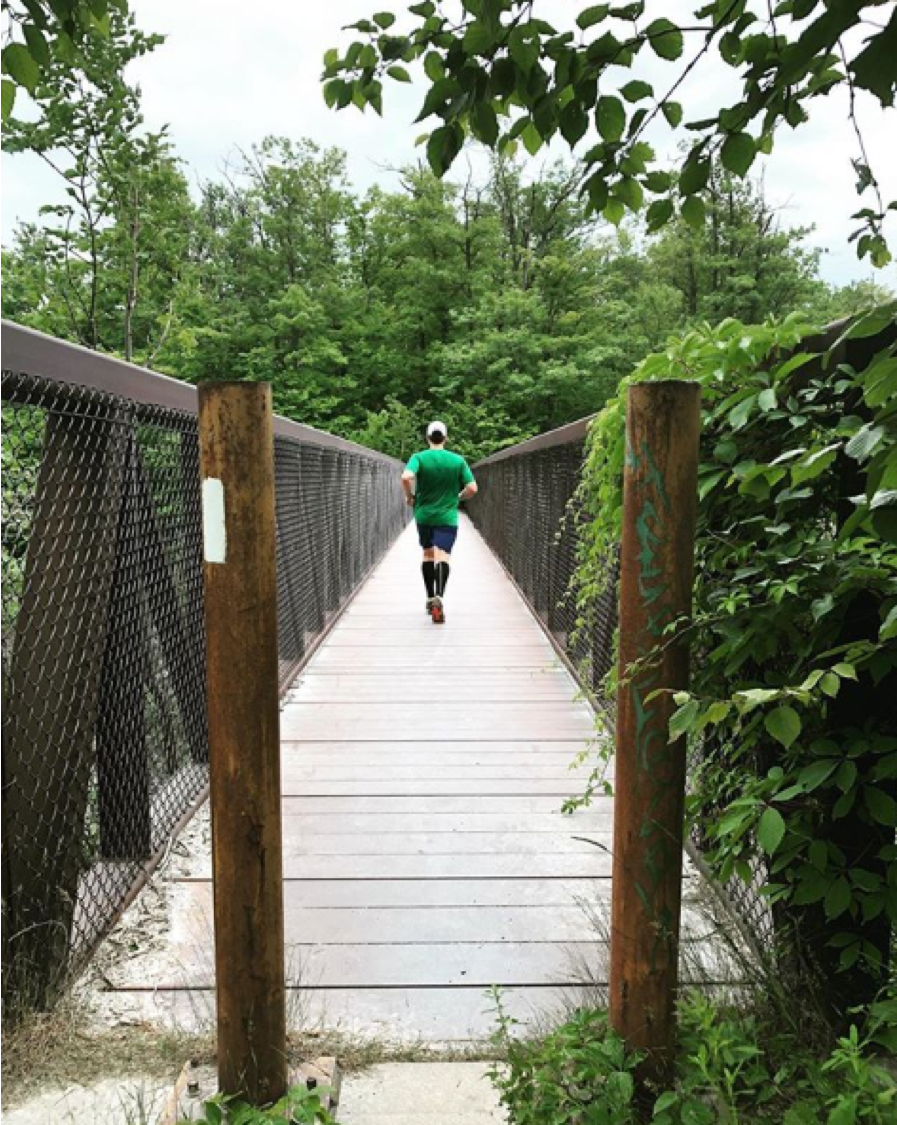I often get asked about what I eat during a 100 mile race and I like to respond that I eat pretty much whatever my stomach will let me. One of the reasons that I like ultra-marathons so much is that you get to eat a lot of delicious foods that you would not normally eat. Everything is fair game from butter tarts – my favourite, to burgers, potato chips, bacon, ice cream, gummies, donuts, you name it. The higher the calories, the better. A runner can burn up to 16,000 calories during a 100-mile race – assuming the race takes 27 hours to complete (reference). People typically get around 500 calories per meal. You would therefore have to eat 32 meals to replace the number of calories burned in a 100 miler. As you can imagine, you cannot replace all of these calories while you are running but food is still very important.
One of the first things that I recommend to new ultra runners is to start training your body to run immediately after eating. When I first started running I would meticulously wait at least thirty minutes after eating or drinking so that I would not get a cramp while running. The beautiful thing is that you can train your body to get over this. Your body is set up to eat and run without making you uncomfortable. It takes a few weeks of practice until you can run easily with a full stomach. I first heard about this when reading Dean Karnasez’s book Ultra-Marathon Man. Dean is a well known ultra-runner and author. In 2005, Dean ran an incredible 350 miles straight without any sleep which took him just under 81 hours. He also won the famous Badwater 135 ultra-marathon in 2004. In Ultra-Marathon Man, Dean tells the story of ordering a pizza while on an all night run in his hometown of San Francisco. Dean told the pizza delivery guy his general vicinity and asked the delivery guy to meet him on his running route. The restaurant thought it was strange but decided to help Dean. Sure enough, Dean got his pizza and proceeded to fold up the pizza into a type of burrito and ate it while he was running. I have never ordered a pizza while running but similar to Dean, I can eat a full meal and then go for a hard run with minimal issues. Just recently, I finished Thanksgiving dinner with turkey, mashed potatoes, stuffing and pumpkin pie and went for a one hour run afterwards while feeling pretty comfortable.
My favourite fuel during races is Clifshot energy gels. Energy gels do not taste bad but I do not particularly like them. In fact, towards the end of a long race, I hate energy gels. I will eat one energy gel every 30-45 minutes during a race and after 20 hours these energy gels start tasting terrible. You might be asking yourself how energy gels can be my favourite fuel source even if I hate the taste of them. The answer is that I know that energy gels work for me. I have been racing with energy gels for over 6 years and gels have always gotten me through races. Gels are easy to carry, you can easily store them in different compartments of your hydration vest, your shorts, etc.
I like to eat solid food every two hours or so and during meal times when I’m doing longer races. I have found that gels by themselves don’t give me enough energy. My body is used to eating breakfast, lunch and dinner at the same time everyday. I keep my body happy during races by sticking to those meal times. One of my favourite solid food options is peanut butter and jam wraps or sandwiches. I find wraps easier to carry since they don’t smooshed in your pack like sandwiches do. Homemade chocolate chip cookies, butter tarts and Timbits (small donuts) are other favourites. The higher the calories, the better.
I usually take advantage of the food options at aid stations. I’ve found that you can only prepare so much with the food that you have brought. At the Midnight Moose 100 miler in September, 2019, I had brought six peanut butter and jam wraps and over twenty chocolate chip cookies. I was loving the peanut butter and jam wraps but the chocolate chip cookies started to make me feel sick about half way into the race. I compensated by eating the different foods at the aid stations. There were small potatoes that were cooked and cut in half. You’re instructed to dip the potatoes into a plate of salt and eat them. These potatoes helped calm my stomach and provided some great electrolytes. I also drank the soda that the aid stations had available. I would drink a full can of Coca-Cola or Ginger Ale every few hours. The carbonation and ginger in the Ginger Ale was helping my stomach feel better, the caffeine in the Coca-Cola gave me an energy boost and the huge amount of sugar was helping me fuel.
I have noticed that the farther I get into a race, the more important food becomes. After 20+ hours on the trail, the way that I feel is directly correlated with how much food is in my system. During my last two long races, I got an immediate boost of energy and well-being from eating something sugary. I would start feeling down and sluggish if I waited for more than a half an hour to eat again.
I have always experienced some form of stomach discomfort during my longer races. It gets very hard to eat enough during the later stages of races. You are forcing a huge amount of calories through your stomach every hour and your stomach starts to rebel. I have found that stomach discomfort is a small price to pay for sustained energy during a race. It’s been helpful to remind myself that I am in charge of my body and that my stomach works for me. This sounds funny but it kept me from vomiting during my last race.
I take notes after every race about which foods worked well for me and which foods did not. I don’t have a very sensitive stomach so I experiment with different foods during races. I ate grilled cheese sandwiches during the Midnight Moose 100 miler and a cheese burger during the Quebec Mega Trail. I had never eaten these foods during races but they made me feel great. That being said, if you have a sensitive stomach, it’s best to experiment with food while you are training so you don’t have a bad experience during a race. Like anything in life, practice makes perfect for race nutrition.










